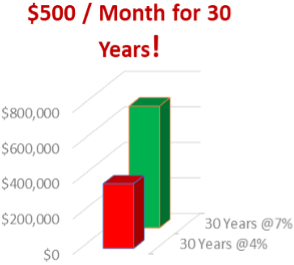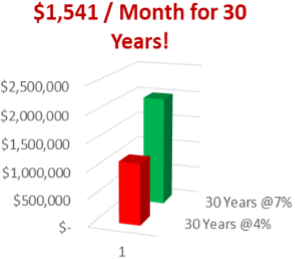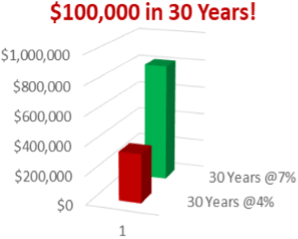


Information about your plan
Recently changed administration from Transamerica to Fidelity.
Your employer and/or Fidelity are not actively managing you accounts.
- Fidelity gives you investment options.
- Website Educations.
- An 800 number to call for basic & general questions about your plan.
- They will not give you specific advice on which funds to invest in each quarter.
Fidelity as your plan administrator allows rebalancing through Fidelity's BrokerageLink feature.
Your current account from Transamerica was transferred to Fidelity electronically.
As of 11/1/2021 you have 16 Fund Choices, Plus life Cycle option and a BrokerageLink Option.
- The BrokerageLink Option opens the door to thousands of fund choices
Been with Saint Luke's for many years? You may still have plans with previous administrators such as:
- Nationwide
- MetLife
- Valic
Recently changed administration from Transamerica to Fidelity.
Your employer and/or Fidelity are not actively managing you accounts.
- Fidelity gives you investment options.
- Website Educations.
- An 800 number to call for basic & general questions about your plan.
- They will not give you specific advice on which funds to invest in each quarter.
Fidelity as your plan administrator allows rebalancing through Fidelity's BrokerageLink feature.
Your current account from Transamerica was transferred to Fidelity electronically.
As of 11/1/2021 you have 16 Fund Choices, Plus life Cycle option and a BrokerageLink Option.
- The BrokerageLink Option opens the door to thousands of fund choices
Been with Saint Luke's for many years? You may still have plans with previous administrators such as:
- Nationwide
- MetLife
- Valic
Recently changed administration from Transamerica to Fidelity.
Your employer and/or Fidelity are not actively managing you accounts.
- Fidelity gives you investment options.
- Website Educations.
- An 800 number to call for basic & general questions about your plan.
- They will not give you specific advice on which funds to invest in each quarter.
Fidelity as your plan administrator allows rebalancing through Fidelity's BrokerageLink feature.
Your current account from Transamerica was transferred to Fidelity electronically.
As of 11/1/2021 you have 16 Fund Choices, Plus life Cycle option and a BrokerageLink Option.
- The BrokerageLink Option opens the door to thousands of fund choices
Been with Saint Luke's for many years? You may still have plans with previous administrators such as:
- Nationwide
- MetLife
- Valic
We'd love to meet you!
Call to book a no-cost, no-obligation strategy session with John Azodi and the 401K Store to learn how you can achieve your financial and retirement goals.
Why we created the 401(k) store:
Our focus is on you! To help nurses and health care professionals with their retirement plans.
- You are an individual and should be treated as one
- We listen and ask questions. We want to know you as an individual to best help you achieve your goals
- My background as a CPA and financial advisor, you get the benefit of Tax Advice and Retirement Planning in one place
- Use a strategy that is designed to help avoid the bear market (major loss) like 2020 COVID-19 initial drop, 2008 or 2000-2003
Help you choose the investment options that are right for you and your future
- We use the options given to all employees, to select specific investment options for you as an individual employee
- We look at each person’s options from both a tax and investment point of view. “Investing with an eye on taxes!
- We use research that helps identify trends in the market
Help manage your retirement account now, before you leave your job or retire
- Combine different plans into one
- Quarterly Rebalancing Process
- Regular review of your portfolio
We help make wealth management easy — and your goals attainable
- We specialize in helping plan participants select the right funds available in their company's specific plan.
- Through BrokerageLink we rebalance your plan for you on a quarterly basis with your agreement
- Help get the most out of your plan to achieve your goals.
Our fee process
- We act as a fiduciary and charge a fee based on the value of the account
- Your plan allows us to charge the fee to the plan with a signed agreement from you

Our focus is on you! To help nurses and health care professionals with their retirement plans.
- You are an individual and should be treated as one
- We listen and ask questions. We want to know you as an individual to best help you achieve your goals
- My background as a CPA and financial advisor, you get the benefit of Tax Advice and Retirement Planning in one place.
- Use a strategy that is designed to help avoid the bear market (major loss) like 2020 COVID-19 initial drop, 2008 or 2000-2003.
Help you choose the investment options that are right for you and your future
- We use the options given to all employees, to select specific investment options for you as an individual employee
- We look at each person’s options from both a tax and investment point of view. “Investing with an eye on taxes!
- We use research that helps identify trends in the market.
Help manage your retirement account now, before you leave your job or retire
- Combine different plans into one
- Quarterly Rebalancing Process
- Regular review of your portfolio
We help make wealth management easy — and your goals attainable
- We specialize in helping plan participants select the right funds available in their company's specific plan.
- Through BrokerageLink we rebalance your plan for you on a quarterly basis with your agreement
- Help get the most out of your plan to achieve your goals.
Our fee process
- We act as a fiduciary and charge a fee based on the value of the account.
- Your plan allows us to charge the fee to the plan with a signed agreement from you.
Our focus is on you! To help nurses and health care professionals with their retirement plans.
- You are an individual and should be treated as one
- We listen and ask questions. We want to know you as an individual to best help you achieve your goals
- My background as a CPA and financial advisor, you get the benefit of Tax Advice and Retirement Planning in one place
- Use a strategy that is designed to help avoid the bear market (major loss) like 2020 COVID-19 initial drop, 2008 or 2000-2003
Help you choose the investment options that are right for you and your future
- We use the options given to all employees, to select specific investment options for you as an individual employee
- We look at each person’s options from both a tax and investment point of view. “Investing with an eye on taxes!
- We use research that helps identify trends in the market
Help manage your retirement account now, before you leave your job or retire
- Combine different plans into one
- Quarterly Rebalancing Process
- Regular review of your portfolio
We help make wealth management easy — and your goals attainable
- We specialize in helping plan participants select the right funds available in their company's specific plan.
- Through BrokerageLink we rebalance your plan for you on a quarterly basis with your agreement
- Help get the most out of your plan to achieve your goals.
Our fee process
- We act as a fiduciary and charge a fee based on the value of the account
- Your plan allows us to charge the fee to the plan with a signed agreement from you

The reason we offer this service is because we received requests from our tax and investment clients to help them with their 401(k)/403(b)/457(b) plans. The need for this service was reinforced by a Schwab 2017 401(k) Participation Study:
- 70% said, “I would like personalized Investment advice for my 401(K).”
- 66% said, “I wish I had an easier way to know how to choose the investments for my 401(k).”
- 45% said, “I don’t feel I know what my best 401(k) investment options are.”
- 44% said, “I feel a lot of stress about choosing the right investment for my 401(k).”
Our services are designed for you, “The Plan Participant,”
not your employer.
Is the potential of having $284,920 to $878,504 more in your 401(k) plan worth the time to read the short report below?
It’s important to note that studies¹⁻² have shown those who seek help with their plan can earn 3% more on their investments (net of advisors' fee). That difference can make a big impact on your bottom line in retirement.
For example, by investing $500 per month for 30 years, the difference between earning an average of 7% versus 4% is $284,920 more (net of advisors’ fee). If you were investing $1,500 per month it would be $854,760 more.
It’s important to note that studies¹⁻² have shown those who seek help with their plan can earn 3% more on their investments (net of advisors' fee). That difference can make a big impact on your bottom line in retirement.
For example, by investing $500 per month for 30 years, the difference between earning an average of 7% versus 4% is $284,920 more (net of advisors’ fee). If you were investing $1,500 per month it would be $854,760 more.



This is a hypothetical example and is not intended to predict or anticipate the performance of any specific investment.
Actual outcomes may differ materially from the expressed projections.
Why do I use 4% instead of 7%?
New ParagraphAccording to Dalbar’s “2015 Quantitative Analysis of Investor Behavior,” the average mutual fund investor has underperformed the market in all the time intervals that were examined, which ranged from one year to three decades. And the underperformance is astonishing. The study also found that in the 20-year period ending December 31, 2013, the average investor (in all varieties of mutual funds) only managed an average total return of about 2.5%. However, for illustrative purposes we are assuming that you are doing 58% better than the average investor.
According to DALBAR’s “20th Annual Quantitative Analysis of Investor Behavior 2014,”
Average return from 1994-2013 (20 years):
Average Equity
Fund Investor:
5.02%
Average Fixed
Income Investor:
0.71%
Average Asset
Allocation Investor:
2.53%
The average investor refers to the universe of all mutual fund investors whose actions and financial results are restated to represent a single investor. This approach allows the entire universe of mutual fund investors to be used as the statistical sample, ensuring ultimate reliability. The various interest rates are for illustrative purposes only. This is not a guarantee of future interest rates or financial return. This illustration assumes deposits are made at the beginning of each year. This illustration does not account for reduction for inflation and taxes. Taxes are due upon withdrawal from qualified retirement plans and IRA and there may be a 10% penalty for withdrawals prior to age 59 1/2.
Virtual Investment Planning, LLC is a registered investment advisor. Information in this message is for the intended recipient[s] only.
We are licensed to sell Insurance Products in the following states: AZ, FL, IA, KS, MO, NC, OH, OR, WI


